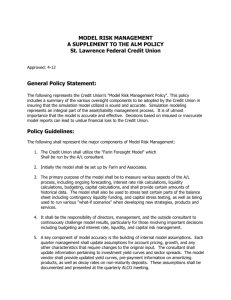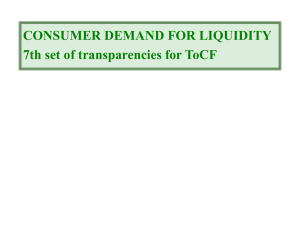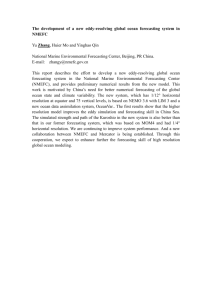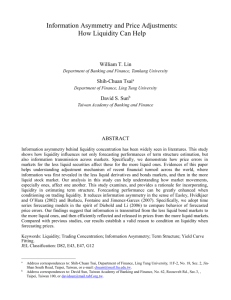liquidity - Focused Financial Resources
advertisement
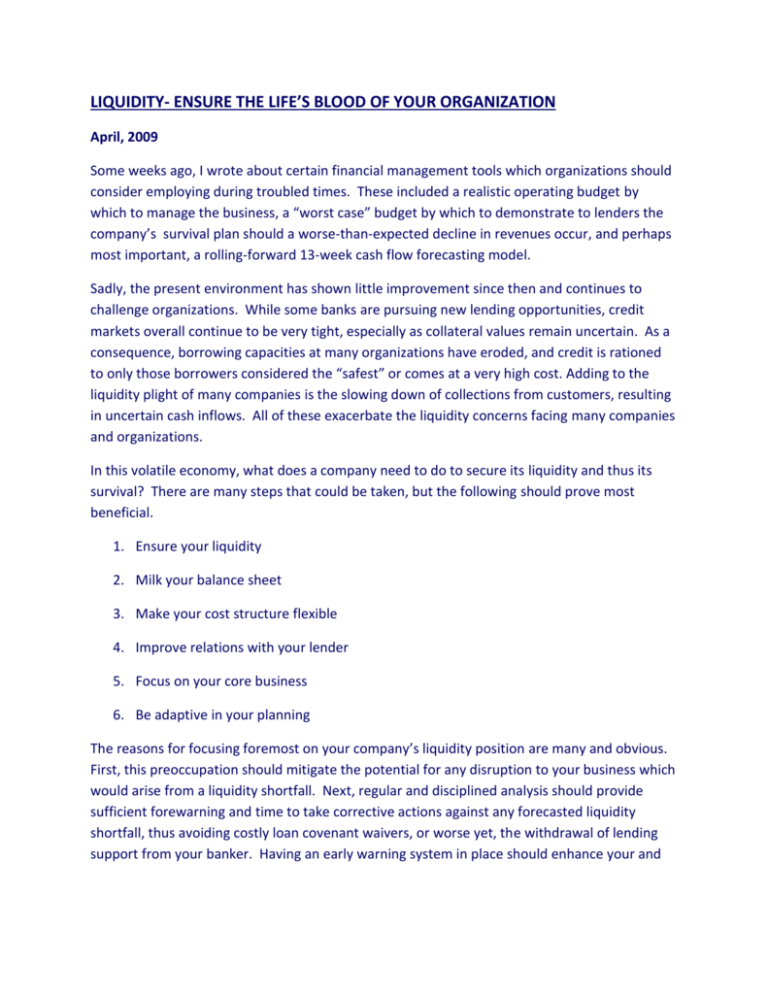
LIQUIDITY- ENSURE THE LIFE’S BLOOD OF YOUR ORGANIZATION April, 2009 Some weeks ago, I wrote about certain financial management tools which organizations should consider employing during troubled times. These included a realistic operating budget by which to manage the business, a “worst case” budget by which to demonstrate to lenders the company’s survival plan should a worse-than-expected decline in revenues occur, and perhaps most important, a rolling-forward 13-week cash flow forecasting model. Sadly, the present environment has shown little improvement since then and continues to challenge organizations. While some banks are pursuing new lending opportunities, credit markets overall continue to be very tight, especially as collateral values remain uncertain. As a consequence, borrowing capacities at many organizations have eroded, and credit is rationed to only those borrowers considered the “safest” or comes at a very high cost. Adding to the liquidity plight of many companies is the slowing down of collections from customers, resulting in uncertain cash inflows. All of these exacerbate the liquidity concerns facing many companies and organizations. In this volatile economy, what does a company need to do to secure its liquidity and thus its survival? There are many steps that could be taken, but the following should prove most beneficial. 1. Ensure your liquidity 2. Milk your balance sheet 3. Make your cost structure flexible 4. Improve relations with your lender 5. Focus on your core business 6. Be adaptive in your planning The reasons for focusing foremost on your company’s liquidity position are many and obvious. First, this preoccupation should mitigate the potential for any disruption to your business which would arise from a liquidity shortfall. Next, regular and disciplined analysis should provide sufficient forewarning and time to take corrective actions against any forecasted liquidity shortfall, thus avoiding costly loan covenant waivers, or worse yet, the withdrawal of lending support from your banker. Having an early warning system in place should enhance your and your company’s credibility with lenders and/or investors, and in times such as the present, this credibility will be critical to gaining support for future financing needs. The warning signs of an impending liquidity crisis may include a significant increase in the average age of receivables as customers delay payment on their accounts; an increase of inventories that is unsupported by sales; and the repeated missing of projections. Also, a company may find itself “borrowed-out” at the limits of its credit line. Further extensions, or even the availability, of credit may become problematic as the collateral values of assets that could secure such loans erode as uncollected receivables and unsold inventories increase and the liquidation values for plant and equipment decline in a weak economy. The companies that will avoid a liquidity crisis and will be positioned to move forward when the economy recovers share a common assumption- that is, liquidity will not be available from outside sources. These companies recognize the difference between accrual-based earnings and cash flow and are managed to generate cash first and foremost. Such companies share a commitment to forecasting their cash generation and disbursements, and many rely on a practical tool such as the rolling-forward 13-week cash flow forecasting model. This forecasting approach instills in its practitioners a rigor for converting their receivables and inventories into cash as quickly as practical. Without sacrificing customer service, they do what they must to keep collections within terms and inventory turns in alignment with sales. With an effective forecasting process, companies can manage the timing of vendor payments and capital expenditures to forestall cash shortfalls. When a cash shortage appears inevitable, then armed with a recovery plan supported by the forecast, the company will be prepared to forewarn its lenders and vendors and are positioned to gain their confidence and support for the accommodations necessary for accomplishing the recovery plan. Companies should also be proactive and diligent in reviewing and understanding all of their loan documents and any other contracts with financial covenants. Actual and forecasted performance should be tracked against all financial covenants to test for future compliance and to prepare should a covenant default appear likely. To conclude, it must be stated that any cash forecasting system is not a guarantee of survival and success, for as a wise person once noted, “In the midst of your planning, life happens.” Forecasting is not a predictor of the future but is a thoughtful, educated “guess” of what might happen given certain assumptions. When events evolve differently than as planned, the company that has been proactive in its forecasting and planning is more likely to have the background information and analysis ready that will enable it to adapt more quickly to the changed circumstances than the company which has not planned. In subsequent newsletters, I will discuss the other steps listed above. -----------------------------------------------------------------------------------------------------------------As a practicing chief financial officer, I am obsessed with the security of clients’ liquidity, especially in these volatile times, and I have had valuable experience in assisting companies through challenging times by developing and implementing the cash flow forecasting and planning processes discussed above. Good planning will reduce risks and lead to improved financial performance. Fulcrum Financial Management provides Chief Financial Officer and related financial advisory services to small and middle market companies in the Central Maryland area. As these companies grow, most find that business issues become more complex, and they begin to experience the Performance Gap in which the CEO/owner is working harder than ever but not seeing the improvements wanted or needed in the company. As your CFO, Fulcrum works to close the Performance Gap by instituting programs and procedures to reduce its clients’ business risks, while improving their profits and cash flows. Its activities can be as hands-on as regaining control over cash to as strategic as managing complex financing and acquisition transactions. In fulfilling this role, Fulcrum may serve as a client’s chief financial officer or in support of and as supplement to the client’s existing chief financial officer and financial management team. Depending on a client’s particular needs, Fulcrum’s services can be provided on a part-time, interim or project basis. In conclusion, please think of Fulcrum should you know of any company in the Central Maryland area that is experiencing challenging financial management issues. William A. Fisher, III, Partner Fulcrum Financial Management LLC 1708 Circle Road Baltimore, MD 21204 T: (410) 598-4893 E: bfisher@fulcrumfm.com W: www.fulcrumfm.com






